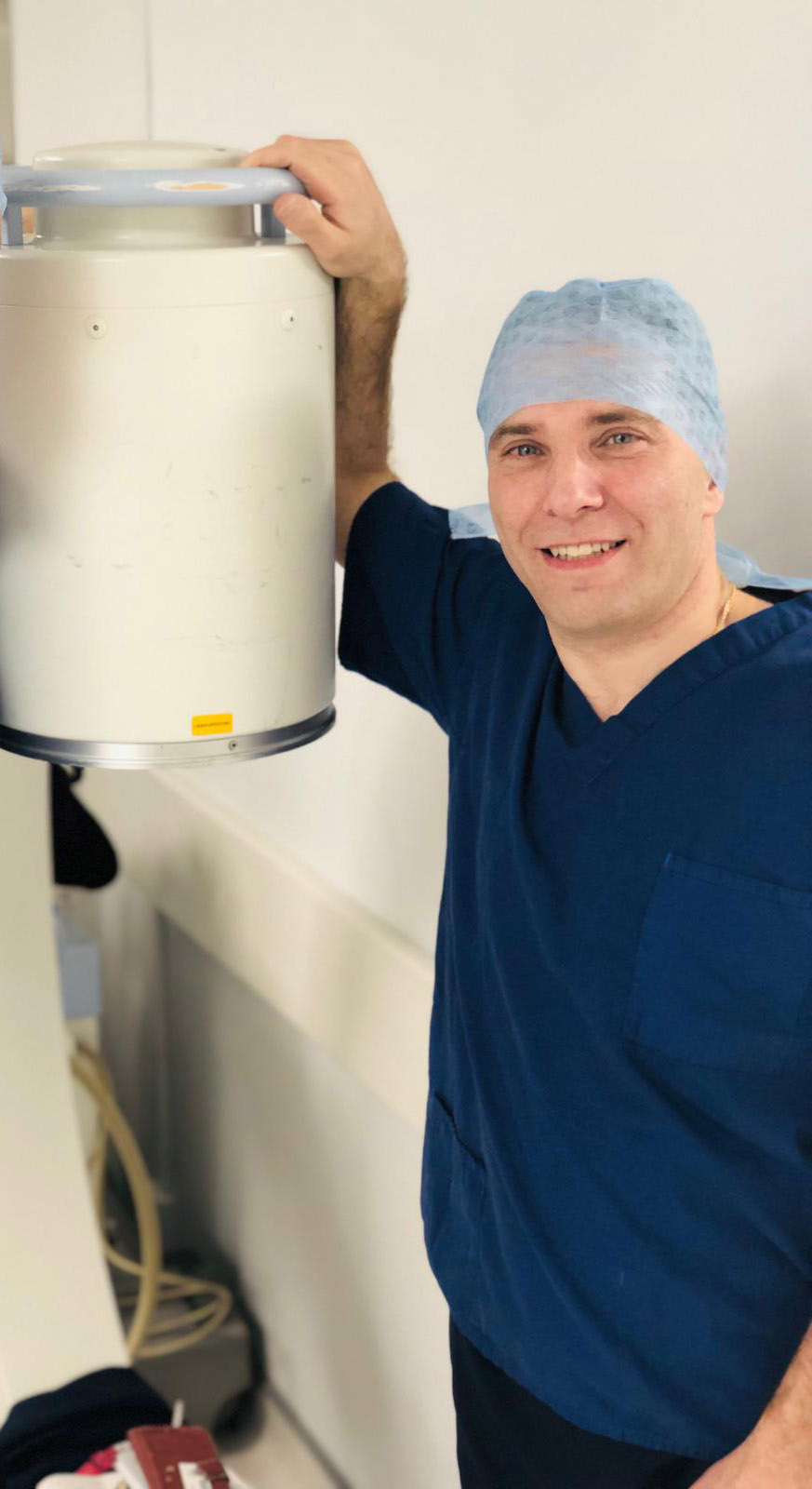Incisional hernias and Abdominal wall restoration
Introduction

I have a special interest in repairing incisional hernias, recurrent incisional hernias and complex abdominal wall defects.
The main reason for this is that patients who undergo major abdominal surgery, although very successful, can be deflated if their abdominal wall loses its shape or becomes cosmetically unacceptable afterwards. An incisional hernia may develop and this can detract from any successful outcome from the abdominal surgery. In fact, up to 80% of patients who undergo abdominal surgery can develop incisional hernias. They may also have associated pain, find that their abdomen is much weaker and that they have to wear different clothes to accommodate their new abdominal shape.
However, patients should know that there are solutions and I would like to explain how patients can have their abdominal wall restored.
Abdominal wall support
These elasticated supports are worth trying, particularly for small hernias and when surgery to correct the hernia is considered too dangerous or the patient does not want to contemplate surgery. The supports can be bought on the internet or obtained through the NHS via the Surgical Appliances Department of the patient’s local NHS hospital.
However, for large hernias, or when the patient is overweight, the abdominal wall supports may not be effective. The supports may not reduce the hernia completely or may become ineffective if they slip when the patients bend down or twist and turn their trunk.
Surgery
Surgery to repair primary or recurrent incisional hernias is the most effective treatment.
Laparoscopic or keyhole surgery is good for small hernias, but much less effective for large hernias. Laparoscopic surgery involves general anaesthesia and filling the abdominal cavity with carbon dioxide to create a large cavity to perform the surgery. The hernia is reduced completely and the adhesions around the hernia are divided. A permanent mesh is placed on the inside of the abdominal cavity, by tacking the mesh to the undersurface of the abdominal wall with absorbable tacks, to prevent any abdominal contents from entering the hernia. For small incisional hernias, the chance of the hernia recurring is less than 10%.
Open surgery is usually reserved for large incisional hernias or recurrent hernias. There are some cases where the midline incisional hernia is associated with a diastasis (where the rectus muscles have split). If the diastasis is present, there is a much greater chance of the hernia recurring if this is not repaired at the same time.
I currently perform such major operations (repairing the large incisional hernia and rectus diastasis) jointly with Mr David Floyd, Consultant Plastic Surgeon. We have perfected techniques over the years to restore the abdominal wall contour, create an excellent cosmetic result and provide a long-lasting hernia repair. This usually involves insertion of a permanent mesh that lies under the muscle of the abdominal wall, but not within the abdominal cavity. This new technique means that there is no risk of injury to bowel and no adherence of bowel to the mesh. This also means that patients usually recover much quicker after the surgery.
This method of joint operating creates a specialised team approach and patients find this much more comforting and reassuring. Our results over the last few years have proven that this approach is the right one.
A similar service is also offered to women, following childbirth, who have developed a belly button hernia (umbilical hernia) and this is associated with a rectus diastasis and excess abdominal skin. It has been shown that repairing the belly button hernia without repairing the diastasis can lead to the hernia returning, either at the same site or above the original hernia in the midline. For women who prefer to have a more secure repair as well as restoring the abdominal wall contour, we offer a bespoke service for assessing patients in our consulting rooms and deciding upon the best approach for each patient prior to surgery.



